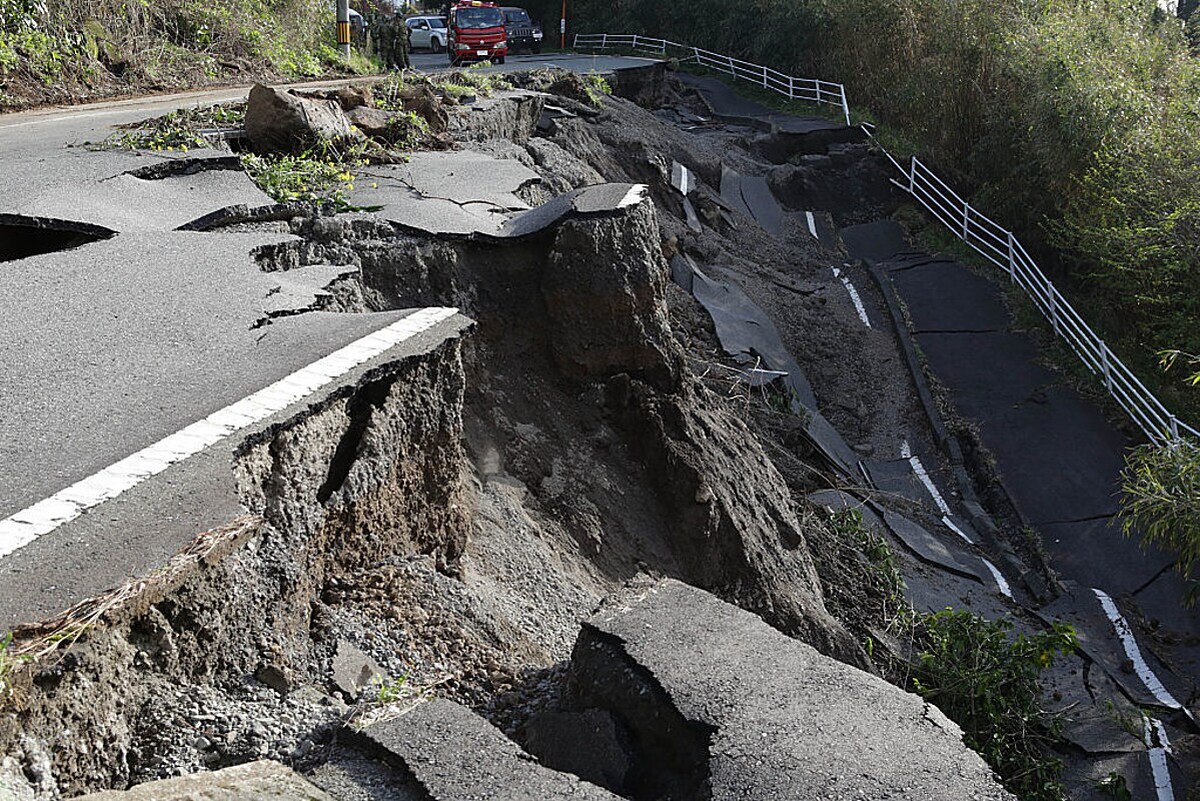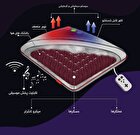What Causes Earthquakes?

Such movement on the faults is generally a response to long-term deformation and the buildup of stress, according to the British Geological Survey (BGS).
Seismic waves from large earthquakes pass throughout the Earth. These waves contain vital information about the internal structure of the Earth. As seismic waves pass through the Earth, they are refracted, or bent, like rays of light bend when they pass through a glass prism. Because the speed of the seismic waves depends on density, we can use the travel-time of seismic waves to map change in density with depth and show that the Earth is composed of several layers.
The Earth’s outermost layer is fragmented into about 15 major slabs called tectonic plates. These slabs form the lithosphere, which is comprised of the crust (continental and oceanic) and the upper part of the mantle. Tectonic plates move very slowly relative to each other, typically a few centimetres per year, but this still causes a huge amount of deformation at the plate boundaries, which in turn results in earthquakes.
Observations show that most earthquakes are associated with tectonic plate boundaries and the theory of plate tectonics can be used to provide a simplified explanation of the global distribution of earthquakes, while some of the characteristics of earthquakes can be explained by using a simple elastic rebound theory.
Below the tectonic plates lies the Earth’s asthenosphere. The asthenosphere behaves like a fluid over very long time scales. There are a number of competing theories that attempt to explain what drives the movement of tectonic plates. Three of the forces that have been proposed as the main drivers of tectonic plate movement are:
Mantle convection currents: warm mantle currents drive and carry plates of lithosphere along a like a conveyor belt.
Ridge push (buoyant upwelling mantle at mid-ocean ridges): newly formed plates at oceanic ridges are warm, so they have a higher elevation at the oceanic ridge than the colder, more dense plate material further away; gravity causes the higher plate at the ridge to push away the lithosphere that lies further from the ridge.
Slab pull: older, colder plates sink at subduction zones because, as they cool, they become more dense than the underlying mantle and the cooler, sinking plate pulls the rest of the warmer plate along behind it.
Research has shown that the major driving force for most plate movement is slab pull, because the plates with more of their edges being subducted are the faster-moving ones. However, ridge push is also presented in recent research to be a force that drives the movement of plates.
There are three types of plated boundary: Divergent: plates moving apart, convergent: plates coming together, transform: plates moving past each other.
Boundaries between tectonic plates are made up of a system of faults. Each type of boundary is associated with one of three basic types of fault, called normal, reverse and strike-slip faults.
Elastic rebound theory was originally proposed after the great San Francisco earthquake in 1906 by the geologist Henry Fielding Reid, to explain the deformation caused by earthquakes.
Before an earthquake, the buildup of stress in the rocks on either side of a fault results in gradual deformation. Eventually, this deformation exceeds the frictional force holding the rocks together and sudden slip occurs along the fault. This releases the accumulated stress and the rocks on either side of the fault return to their original shape (elastic rebound) but are offset on either side of the fault.
There are three basic types of fault: normal, reverse and strike-slip. Certain types of fault are characteristic of the different plate boundaries, although often more than one type of fault occurs there. This can help us understand the relative movement of the plates and the type of deformation.
During an earthquake, the rock on one side of the fault suddenly slips with respect to the other. The fault surface can be horizontal or vertical or some arbitrary angle in between. Faults are classified using the angle of the fault with respect to the surface (known as the dip) and the direction of slip along the fault.
Faults that move along the direction of the dip plane are called dip-slip faults while strike-slip faults are classified as either right-lateral or left-lateral. Faults which show both dip-slip and strike-slip motion are known as oblique-slip faults.
4155/v
























